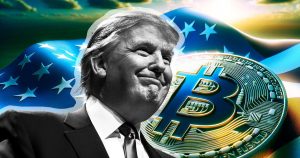Understanding the Risks in Decentralized Finance (DeFi): A Deep Dive into the CFTC’s Concerns

In the ever-evolving landscape of digital finance, decentralized finance (DeFi) has emerged as a groundbreaking development, offering an alternative to traditional financial systems. However, with innovation comes challenges. The Commodity Futures Trading Commission (CFTC) has recently raised concerns about the inherent risks DeFi poses due to its lack of accountability. Let’s delve into what this means for the DeFi ecosystem and the broader financial market.
What is DeFi?
DeFi, short for decentralized finance, represents a shift from traditional, centralized financial systems to peer-to-peer finance enabled by decentralized technologies built on blockchain. DeFi platforms allow users to lend, borrow, trade, and earn interest on their assets in a trustless environment.
The Rise of DeFi
DeFi has witnessed exponential growth, attracting significant attention for its potential to democratize access to financial services. But as we celebrate its ascent, it’s crucial to recognize the challenges it faces.
CFTC’s Stance on DeFi
The CFTC, a regulatory agency overseeing commodity futures and options markets in the United States, has flagged DeFi as a sector posing serious risks. The primary concern revolves around the lack of accountability and regulatory oversight.
Accountability in DeFi
In traditional finance, institutions are held accountable by regulatory bodies. DeFi, by its nature, operates without centralized authority, raising questions about how accountability is maintained in this new environment.
The Risks Highlighted by the CFTC
DeFi’s lack of centralized control introduces unique risks. Here, we break down the key concerns raised by the CFTC.
1. Market Manipulation and Fraud
In an unregulated space, the potential for market manipulation and fraudulent activities increases. How can DeFi tackle these risks effectively?
2. Consumer Protection
Without traditional safeguards, users may be more vulnerable to losses. How does DeFi ensure user protection in its framework?
3. Financial Stability
The integration of DeFi into the broader financial system raises questions about its impact on overall financial stability.
Potential Solutions and Future Directions
While the risks are real, so are the possibilities for innovative solutions.
1. Self-Regulation and Governance Models
Can DeFi develop robust self-regulation mechanisms to mitigate these risks?
2. Technology-Driven Compliance
Leveraging blockchain technology for compliance and monitoring could be a game-changer.
3. Bridging the Gap with Traditional Finance
How can DeFi coexist with traditional financial systems while maintaining its decentralized ethos?
The CFTC’s concerns about DeFi highlight the need for a balanced approach to innovation and regulation. As DeFi continues to grow, finding ways to address these risks while preserving its core principles will be crucial for its long-term success.
FAQs
- What is DeFi?
- DeFi stands for decentralized finance, an emerging financial technology based on secure distributed ledgers similar to those used by cryptocurrencies.
- Why is the CFTC concerned about DeFi?
- The CFTC is concerned about the lack of regulatory oversight in DeFi, which could lead to market manipulation, fraud, and consumer protection issues.
- Can DeFi be regulated?
- Regulating DeFi is challenging due to its decentralized nature, but discussions are ongoing about how to implement effective oversight mechanisms.
- How does DeFi differ from traditional finance?
- Unlike traditional finance, DeFi operates without central authorities, using technology to facilitate financial transactions.
- What can be done to mitigate the risks in DeFi?
- Solutions include developing self-regulation, technology-driven compliance, and finding ways to integrate with traditional finance.





